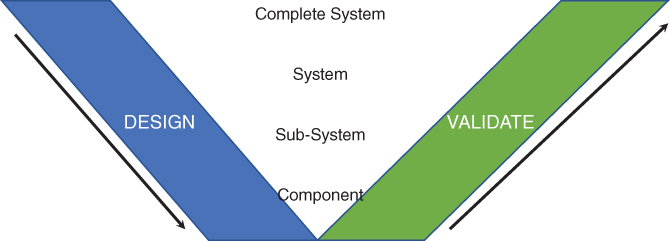8Validation by Modelling and Physical Testing
8.1 Introduction
Chapter 6 described how the concepts for new products are formulated and Chapter 7 spoke about identifying the engineering risks that might need to be overcome for those products to be robust offerings to the marketplace. This chapter is concerned with the analysis, modelling, and test work, which could be used to identify and overcome those risks before new products or services are launched. The aim, as always, is to maximise the reliability of new products at their points of launch.
The approach is sometimes described in a V‐shaped or ‘waterfall’ model, as indicated below (see Figure 8.1):

Figure 8.1 Waterfall development model.
The left leg of the V signifies the design phase of the development, starting with the overall product and progressing through systems and assemblies down to the individual details. Then, the right leg of the V signifies the development and validation work, which is undertaken to identify any issues or problems that the design might possess, starting at the level of the individual component and working up to the complete system.
This is a good overview of what happens, and this approach is also used in other fields such as software development, but it does simplify how validation takes place, making it seem more of a neat, serial activity than is actually the case. Rather than just being ...
Get Managing Technology and Product Development Programmes now with the O’Reilly learning platform.
O’Reilly members experience books, live events, courses curated by job role, and more from O’Reilly and nearly 200 top publishers.

